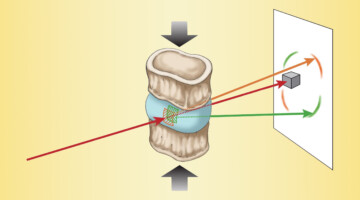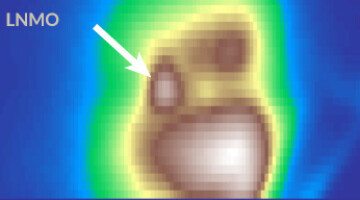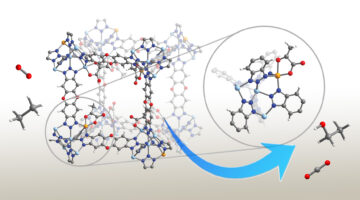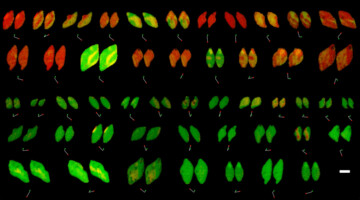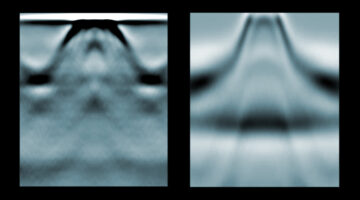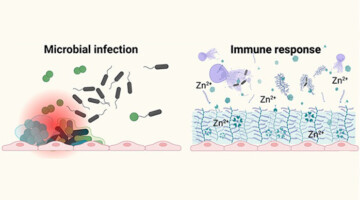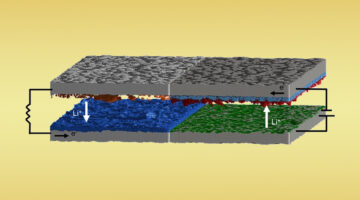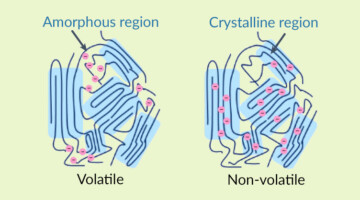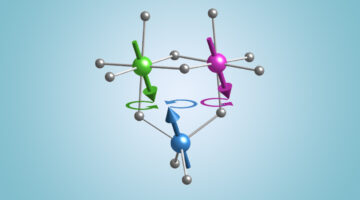Researchers found that type 2 diabetes induces earlier onset of plastic (nonrecoverable) deformation in intervertebral discs by impairing the biomechanical behavior of collagen. A greater understanding of the underlying causes of tissue failure in diabetes—a growing problem worldwide—is important in helping to prevent and treat symptoms. Read more »![]()
Science Briefs
Cobalt or Nickel: Which is Better for High-Energy Battery Cathodes?
High-energy Li-ion batteries can provide both high capacity and high voltage, both of which are important in electric vehicles for greater range and faster acceleration. Here, researchers untangled the contributions of nickel and cobalt in high-energy Li-rich battery cathodes, pointing the way to optimizing them via a compositional approach. Read more »
A Bio-Inspired Metal-Organic Framework for Capturing Wellhead Gases
Burning of natural gas at oil and gas wells, called flaring, is a major waste of fossil fuels and a contributor to climate change. In this work, researchers synthesized and characterized a metal-organic framework that uses biomimetic chemistry to convert wellhead gases into economically valuable feedstocks for petrochemical products. Read more »
“Computer Vision” Review of X-Ray Movies Leads to New Insights
Using a type of machine learning called “computer vision” to mine data from x-ray movies, researchers made new discoveries about the reactivity of a material in rechargeable batteries. The results suggest that optimizing the carbon layer thickness on the electrode surface could help researchers to design more efficient batteries. Read more »
Building a Two-Dimensional Magnet One Atom at a Time
Researchers synthesized a new two-dimensional ferromagnet and measured how its electronic and magnetic properties evolve with increasing thickness and temperature. Such atomically thin magnetic materials with tunable magnetic properties would be very useful in next-generation microelectronic and spintronic applications. Read more »
Immune Response Spurs Growth of “Soft” Kidney Stones
Matrix stones are an unusual type of soft kidney stone closely associated with the presence of bacteria from unchecked urinary tract infections. Researchers conducted a comprehensive study of surgically extracted matrix stones, work that highlights how host defense mechanisms against microbes can simultaneously encourage harmful stone formation. Read more »
Improving Carbon Retention in Grassland Soil from Point Reyes
Soil organic carbon directly influences the life-supporting services provided by soils, including the production of food and the regulation of atmospheric carbon dioxide. To better understand how minerals such as calcium affect carbon accumulation in soil, researchers studied soils collected from Point Reyes National Seashore. Read more »![]()
A Deep-Learning Analysis of Lithium-Plating Dynamics in Batteries
Lithium-metal solid-state batteries are a promising technology, but the deposition (plating) of lithium metal on electrode surfaces remains a significant technical hurdle. Here, researchers used micro-computed tomography data to train an artificial intelligence model to identify characteristics vital to improving battery performance. Read more »![]()
An Organic Transistor That Can Sense, Process, and Remember
Traditional AI hardware employs physically separated information sensing, processing, and memory architecture, a configuration that suffers from large energy and time overhead. Now, researchers have fabricated an organic transistor device that can simultaneously act as the sensor and processing core of a streamlined AI hardware system. Read more »
Capturing the Spin Dynamics of a Complex Magnetic Material
Magnetic iron oxides (ferrites) are complex materials with broad electronic applications that are often driven by microwaves. Here, researchers have precisely measured the spin behavior of several distinct cations in a ferrite material under an applied microwave field, validating a longstanding assumption about magnetic oxide dynamics. Read more »
- « Previous Page
- 1
- 2
- 3
- 4
- 5
- 6
- …
- 23
- Next Page »
